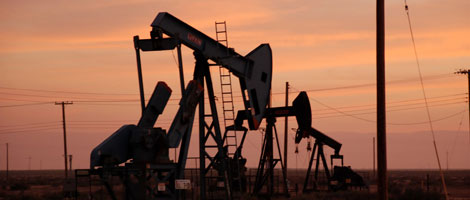Helmerich & Payne (HP) reported December quarter (first quarter of the 2018 fiscal year) earnings of $4.57 a share.
As they say on Wall Street–that $4.57 a share may not be comparable to the Wall Street analyst consensus estimate of a loss of 13 cents for the quarter.
Helmerich & Payne didn’t beat estimates by $4.70 a share. Net income included $4.57 a share of after-tax gains from a non-cash (that is “accounting”) gain of $501 million from a reduction in the company’s deferred income tax liability resulting from the recently passed Tax Cuts and Jobs Act.
A more accurate measure of the quarter is the company’s adjusted operating loss of 2 cents a share. That’s still way better than Wall Street was expecting.
The good news also extended to revenue which saw $564 million in the quarter, a significant beat to the $538 million expected by analysts and a big improvement (53%) from the $369 million in the December quarter of 2016.
The reduction in the company’s loss and the big improvement in revenue mean that fears that the company would have to cut its dividend to conserve cash can be put to bed. The stock pays a dividend yield of 3.9%, which is why it’s a member of my Dividend Portfolio. The position, which I started back on March 10, 2017 at $67.30, moved into the black on January 8. The stock closed at $73.69 on January 25. For 2017 Helmerich & Payne lost 12.87%, but for the last three months the shares are up 44.98%.
I’m keeping the shares in my Dividend Portfolio on that almost 4% yield and looking for a total return of price appreciation and dividends north of 10% for 2018.
Why such modest expectations? Because while Helmerich & Payne owns the biggest fleet of the super-spec land drilling rigs most in demand in the United States, there are an awful lot of older, less efficient rigs waiting to come back on the market when drilling levels pick up enough–and the mere existence of these rigs depresses the day rate for even the newest, most in demand drilling rigs.
Rig count in the United States continues to grow steadily but what’s needed to absorb that extra rig supply is a surge in rig count that just doesn’t look very likely. The company reported that its working land rig count in the United States grew by about 4%–that’s all–to 204 on December 31, 2017 from 197 on September 30, 2017. And for the upcoming March 2018 quarter the company expects only another 3% to 4% increase in the number of active rigs. Average rig revenue per day is expected to be roughly flat to slightly up in the March quarter from the December period.
The big revenue and operating income gains in the December quarter come from a big increase utilization levels for Helmerich & Payne’s fleet of rigs to 57% in the December 2017 quarter from 31% in the December 2016 quarter. (That abysmal utilization figure for the December 2016 quarter tells you how steep the slump in U.S. land drilling activity was.)
I’d expect the company to also see modest growth in revenue and earnings from its capital spending. The company spent just $91.7 million on capital equipment in the December quarter and told Wall Street to expect capital spending of about $350 million in fiscal 2018. That money will go to upgrading the company’s rigs. Helmerich & Payne owns about 40% of the industry’s super-spec rigs that can drill deeper and faster and that can be more quickly shut down and set up again at a new drilling pad. Those efficiencies mean these rigs earn something like an extra $2,000 to $3,000 a day in fees. Helmerich & Payne also owns about 50% of the industry’s 200-250 existing rigs that can be easily and relatively inexpensively upgraded to super-spec rigs. Upgrading a rig costs from $2 million to $8 million. The company upgraded 16 in the December quarter and told analysts that it can upgrade 12 rigs a quarter if demand warrants. (Just for comparison, building a new super-spec rig from scratch costs around $25 million.)
So that capital budget is enough to upgrade a lot of rigs to the highest paying category–if demand and oil prices justify the spending.
The company finished the December 2017 quarter with $384 million in cash and long-term debt of just $493 million.



Thanks for updating HP, great call. Do you have an opinion on Southern Company at its 52 week low yielding 5.2 %.